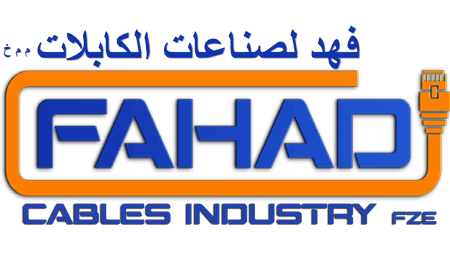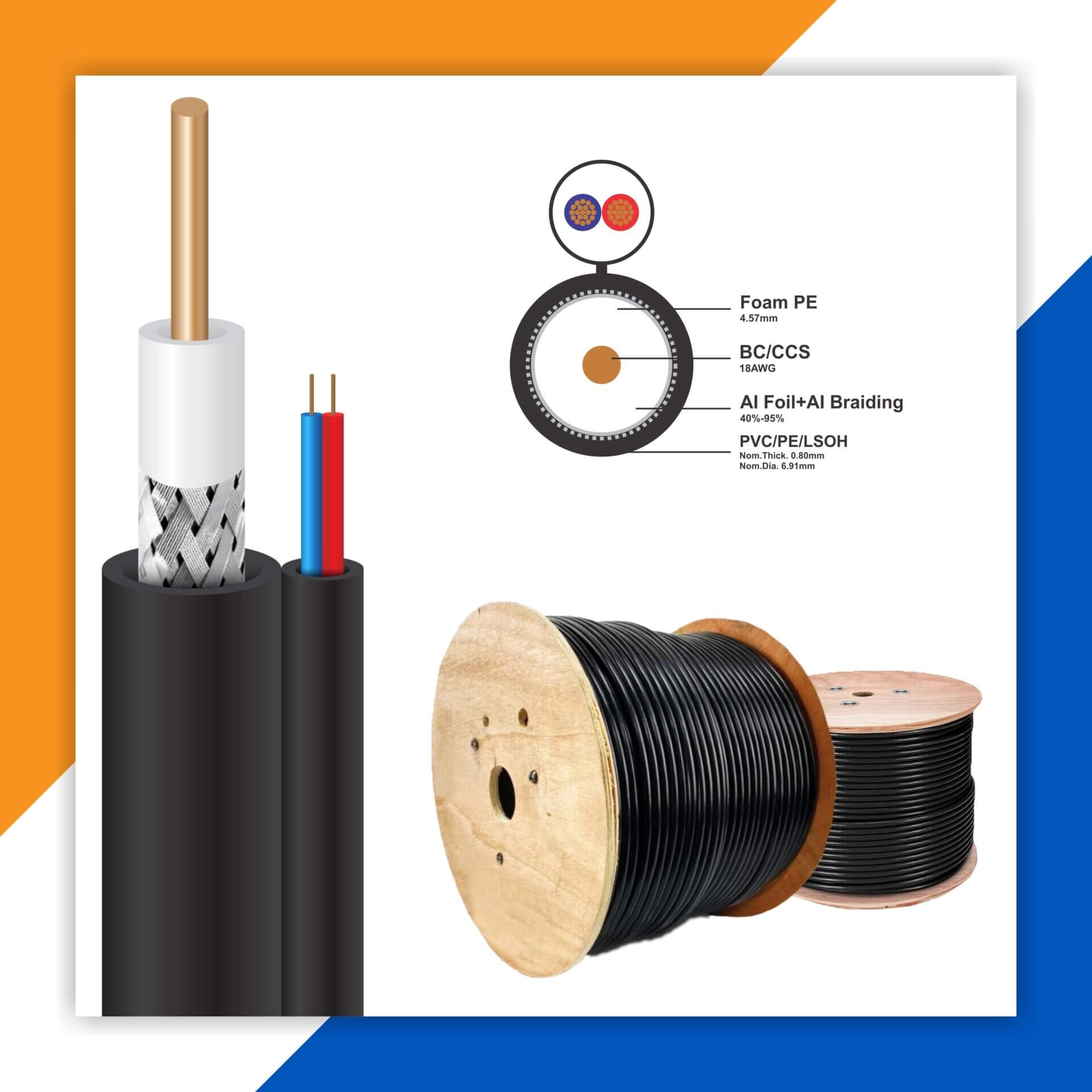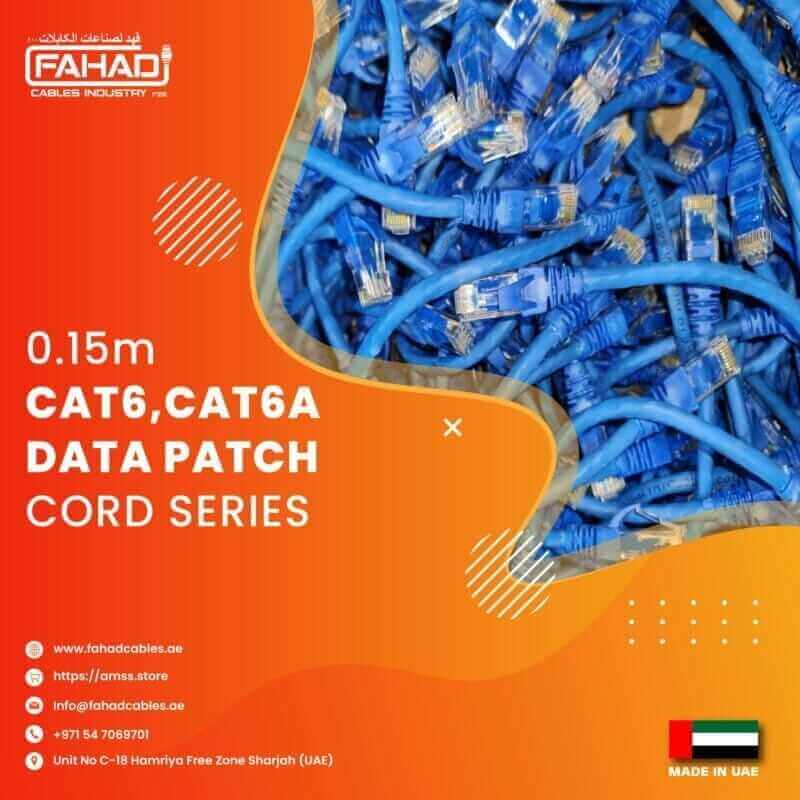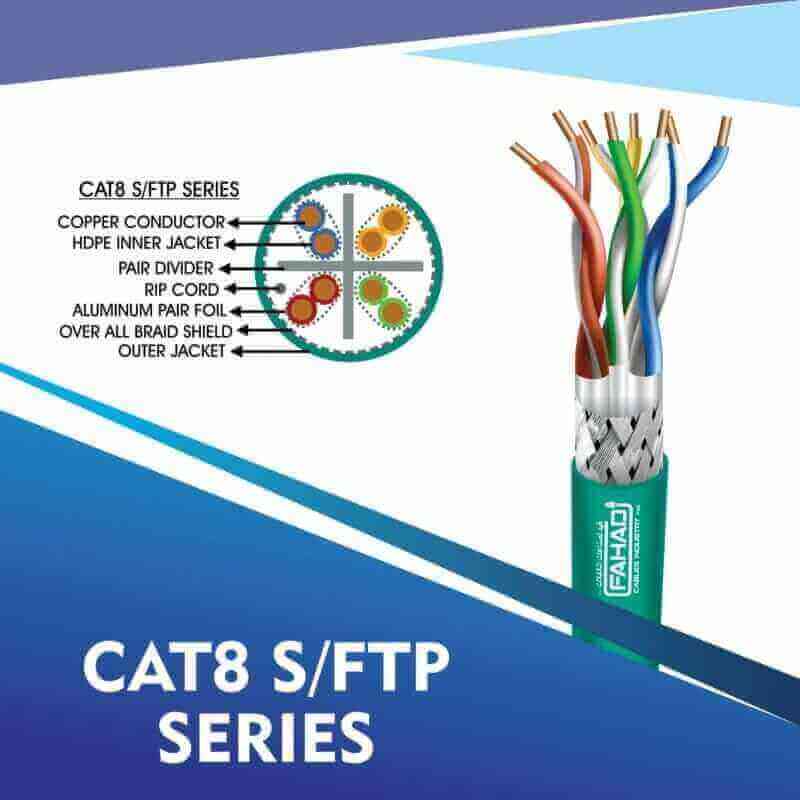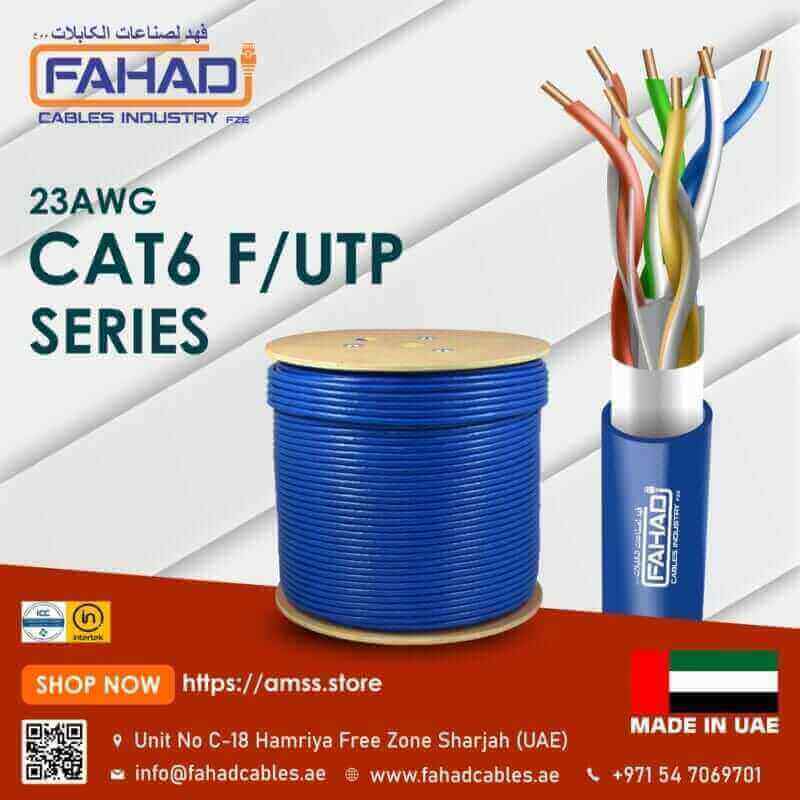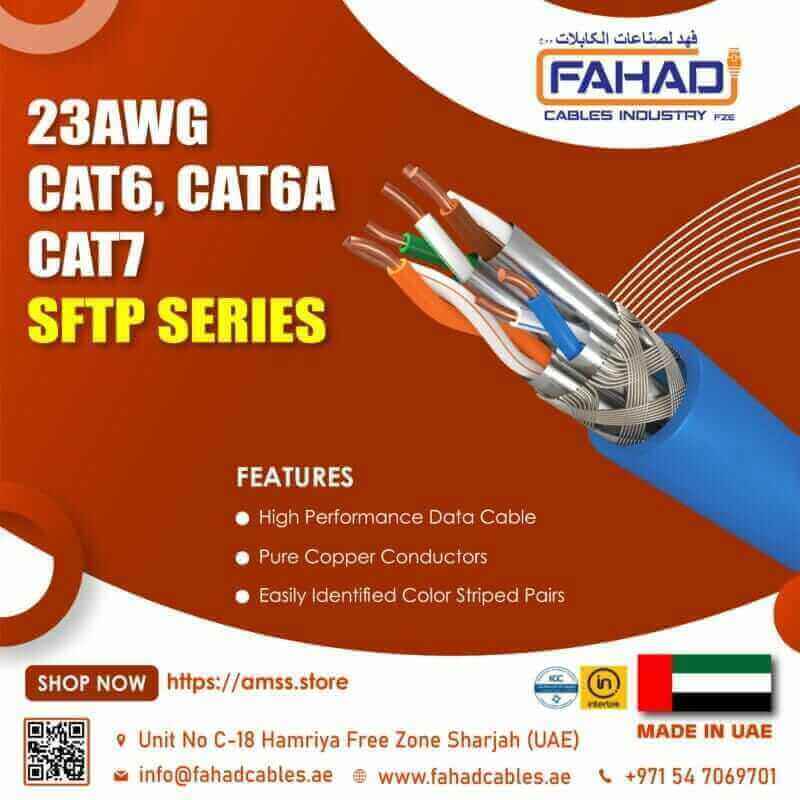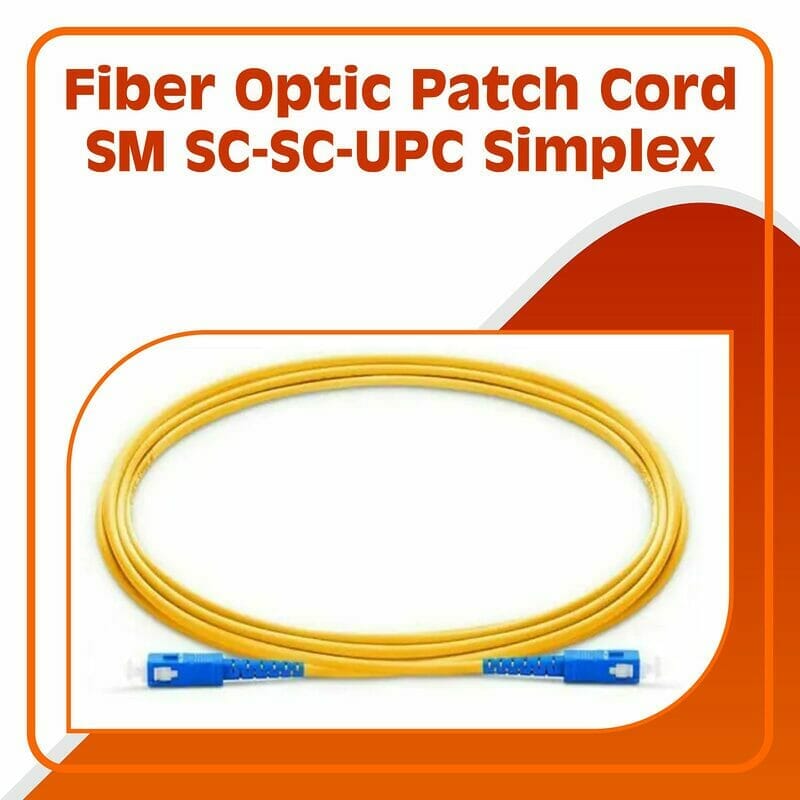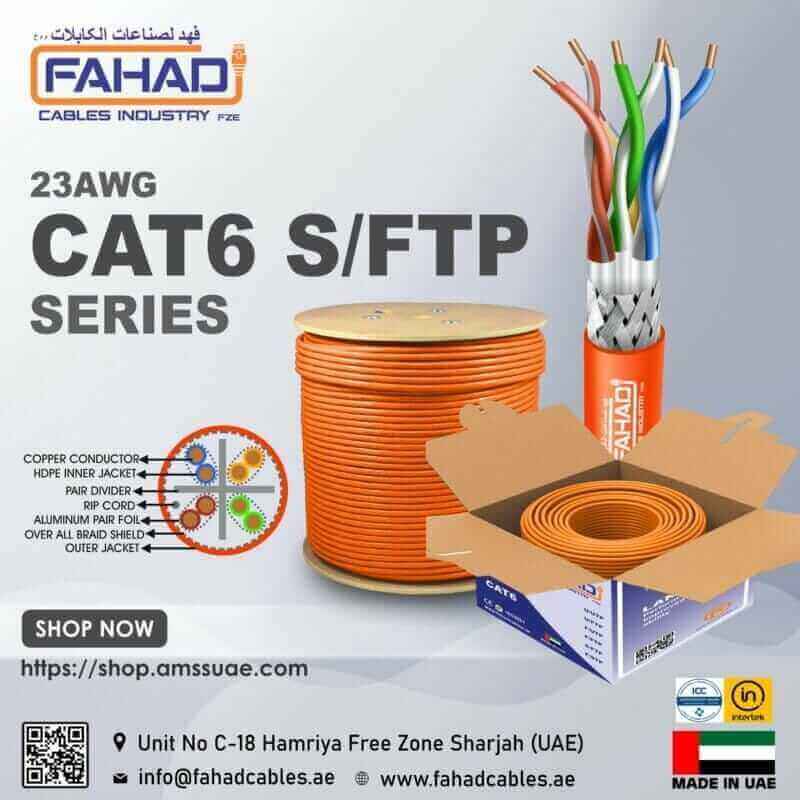Introduction to Coaxial Cables
Coaxial cables are a type of electrical cable that consists of an inner conductor, an insulating layer, a metallic shield, and an outer insulating layer. This unique structure allows coaxial cables to transmit data with minimal interference, making them an essential choice for various telecommunications applications. The construction of coaxial cables significantly enhances their functionality, as the design helps to reduce signal loss while protecting the inner conductor from external electromagnetic interference.
There are several types of coaxial cables, with RG6, RG59, and RG58 being among the most commonly used in both residential and commercial setups. Each type serves specific purposes based on its construction and characteristics. For instance, RG6 cables are often utilized for cable television and satellite signal transmission, owing to their ability to support higher bandwidths and longer cable runs. Conversely, RG59 is typically used for lower frequency applications such as closed-circuit television (CCTV) systems, while RG58 cables are favored in radio frequency (RF) applications, especially in situations where flexibility is crucial.
Understanding the specifications of coaxial cables is vital for selecting the right type for any particular application. Factors such as impedance, attenuation, and shielding effectiveness play a critical role in the performance of these cables. For example, a cable with a lower attenuation rating allows for longer signal transmissions without degradation. Additionally, different applications may require cables with varying levels of shielding to mitigate interference from other electronic devices. Therefore, a comprehensive understanding of coaxial cables and their specifications is essential for professionals in the telecommunications and networking industries.
Overview of RG6 Coaxial Cables
RG6 coaxial cables are designed primarily for digital video and satellite signal transmission. Physically, they are characterized by a thicker dielectric insulator and a larger conductor compared to their RG59 counterparts. This construction facilitates better performance over longer distances. The coaxial structure consists of an inner conductor, an insulating layer, a braided or solid shielding layer, and an outer jacket, all of which contribute to the cable’s robustness and reliability.
One of the main advantages of RG6 cables is their ability to reduce signal loss, particularly in high-frequency applications. They typically boast a lower attenuation rate than RG59, making them a superior choice for installations where maintaining signal integrity is crucial. This characteristic is especially beneficial for long runs, as RG6 cables can effectively transmit signals over distances of up to 1,000 feet with minimal degradation. This capability makes RG6 an optimal option for modern digital services, including high-definition cable television and broadband internet.
In terms of impedance, RG6 cables are typically rated at 75 ohms, which aligns well with the requirements of most video applications. This impedance is essential for matching the cable with devices like satellite receivers and TVs, ensuring that signal reflection is minimized and transmission efficiency is maximized.
RG6 coaxial cables are commonly used in residential and commercial settings. Typical applications include satellite dish installations, cable television, and some types of broadband systems. When considering RG6 for a specific project, it is also important to recognize considerations such as environmental durability and flexibility for installation purposes, categories in which RG6 generally performs well.
Exploring RG59 Coaxial Cables
RG59 coaxial cables are a vital component in the realm of video transmission. Designed primarily for short-distance applications, these cables are characterized by their 75-ohm impedance, which provides optimal performance in video signal transfer. The construction of RG59 features a solid copper core, surrounded by an insulating layer and a braided shield that helps to reduce electromagnetic interference. This design serves to enhance the quality of signals transmitted, making RG59 an ideal choice for specific applications in the audiovisual domain.
One of the standout features of RG59 cables is their effectiveness in transmitting analog video signals. This makes them particularly adept at functioning in closed-circuit television (CCTV) installations, where they facilitate the transmission of video feeds from security cameras to recording devices. An RG59 cable ensures minimal signal loss over short distances, which is essential in maintaining the clarity and reliability of video surveillance systems. Additionally, it can be utilized in various home entertainment setups, particularly where lower quality video signals are acceptable.
When comparing RG59 with RG6 coaxial cables, it is crucial to consider the specifications of each cable. RG6 has a thicker insulation and is designed for longer distance transmission with less signal degradation, primarily intended for digital applications. Therefore, while RG6 may be preferable in residential or commercial settings where higher quality and longer cable runs are required, RG59 still holds a firm place in applications that do not demand such extensive capabilities. Ultimately, selecting the appropriate coaxial cable depends largely on the specific requirements of the application at hand, such as distance, quality of the signal, and the type of video being transmitted.
Understanding RG58 Coaxial Cables
RG58 coaxial cables are a popular choice in various applications due to their unique characteristics and versatility. Designed primarily for radio frequency (RF) communications, RG58 cables have a nominal impedance of 50 ohms, making them ideal for a wide range of RF applications. The construction of RG58 features a solid or stranded center conductor made of copper, surrounded by a dielectric insulator, which is further shielded by braided copper or aluminum. This design ensures a reliable transmission of signals while minimizing interference from external sources.
One of the standout features of RG58 coaxial cables is their flexibility. This quality is crucial for installations where cables need to navigate tight bends or be routed through complex environments. The smaller diameter—typically around 5 mm—allows for easy handling and installation, whether in permanent setups or temporary configurations such as fieldwork or events. The flexible nature of RG58 cables enables them to be used effectively in cramped spaces without compromising signal quality.
In addition to their use in RF communications, RG58 coaxial cables are widely used in networking applications. They can connect devices such as antennas, transmitters, and receivers. Their capability to handle high-frequency signals makes them suitable for not just amateur radio installations but also in professional settings, including television and radio broadcasting. Furthermore, RG58’s lightweight design contributes to its popularity, particularly in mobile and portable applications, where reduced weight can significantly benefit overall equipment transportability.
In summary, RG58 coaxial cables are an essential component of modern RF and networking technologies. Their distinctive properties, such as flexibility and lightweight design, make them ideal for various uses across multiple industries. Whether for communication systems or networking solutions, RG58 cables are a reliable choice for maintaining high-quality signal transmission.
Manufacturing Process at Fahad Cables Industry FZE
The manufacturing process of coaxial cables at Fahad Cables Industry FZE involves a meticulous set of procedures designed to ensure superior quality and performance of RG6, RG59, and RG58 cables. The production begins with the selection of high-grade raw materials, including copper for the inner conductor, dielectric insulation materials, and durable outer sheaths. These components are sourced from reputable suppliers, ensuring that only the best materials are utilized in the manufacturing process.
Once the materials are obtained, the next step involves precise extrusion processes. The inner copper conductor is manufactured to specific diameters and is then surrounded by a layer of dielectric insulation. This insulation is crucial as it determines the cable’s signal integrity and overall performance. The extruder equipment used is state-of-the-art, allowing for uniform thickness and material consistency, which are vital for the reliable transmission of signals in coaxial cables.
Following the insulation stage, the next step is the addition of the outer conductor, which serves as a shield against electromagnetic interference. This shield is applied through an advanced process that guarantees sufficient coverage without compromising flexibility. Afterward, the outer sheath is extruded to protect the internal components from environmental factors, ensuring longevity.
Quality control is an integral aspect of the manufacturing process at Fahad Cables Industry FZE. Each batch of RG6, RG59, and RG58 cables undergoes rigorous testing to assess electrical performance, mechanical strength, and resistance to wear. Tests include impedance measurement, signal loss evaluation, and physical inspections to guarantee adherence to international standards. These quality assurance protocols ensure that the coaxial cables produced are not only reliable but also capable of meeting the varying demands of customers across different sectors.
Quality Standards and Certifications
Coaxial cables, including RG6, RG59, and RG58, play a crucial role in modern communication and audio-visual systems. To ensure these cables perform optimally and maintain reliability, it is essential that they meet established quality standards and certifications. These standards are set by various international organizations that assess a wide array of factors, including electrical performance, mechanical durability, and environmental tolerance.
Among the most recognized standards is the International Electrotechnical Commission (IEC) certification, which covers a range of electrical products. Compliance with IEC standards ensures that coaxial cables can withstand the rigors of their intended applications and environments. In addition to IEC, the American National Standards Institute (ANSI) and Underwriters Laboratories (UL) also provide significant benchmarks for coaxial cable quality, particularly in North America. Adhering to these certifications signifies that the manufacturer, such as Fahad Cables Industry FZE, operates under strict quality management systems.
At Fahad Cables Industry FZE, we adhere to rigorous testing protocols, ensuring that our RG6, RG59, and RG58 coaxial cables are tested for performance characteristics, such as attenuation, shield effectiveness, and bandwidth capability. This comprehensive testing not only guarantees product quality but also assures our customers that the cables are dependable for various applications, from satellite television connections to internet and data transmission.
In today’s marketplace, compliance with quality standards and certifications is a fundamental criterion for consumers and industry professionals alike. By focusing on these quality measures, customers can make informed decisions when selecting coaxial cables for their specific needs, ultimately contributing to the reliability and efficiency of their overall systems.
Comparative Analysis: RG6 vs RG59 vs RG58
In the realm of coaxial cables, RG6, RG59, and RG58 are three prevalent types, each tailored to suit specific applications based on their technical specifications. Understanding the distinctions between these cables can significantly enhance one’s decision-making process when selecting the appropriate cable for a particular scenario.
RG6 cables are typically favored for both digital and analog signals due to their superior performance and higher bandwidth capabilities. With a larger conductor diameter and better insulation, RG6 cables demonstrate reduced attenuation, making them ideal for longer runs in applications such as cable television and satellite systems. They are designed to support the transmission of high-definition signals, ensuring clarity and consistency.
In contrast, RG59 cables are predominantly used in applications where distance is less of a concern, such as security cameras and standard-definition video feeds. While they provide adequate performance for less demanding scenarios, their greater attenuation makes them less effective for long cable runs. RG59 cables are generally easier to handle due to their smaller size and flexibility, making them a practical choice for installations where space and handling ease are a priority.
RG58 cables differ from both RG6 and RG59, being primarily utilized in radio frequency (RF) applications. They are especially suitable for short-distance communications, such as those seen in Wi-Fi antenna setups or other RF communications equipment. RG58’s lighter gauge makes it straightforward to work with; however, it is not recommended for lengths exceeding 100 feet due to increased signal loss.
When choosing among these coaxial cable types, it is crucial to consider the specific requirements of the application, including the length of the run, the signal integrity needed, and the physical environment in which the cable will be installed. Each coaxial cable has its strengths and weaknesses, which should inform the selection process to ensure optimal performance.
Latest Trends in Coaxial Cable Technology
Coaxial cable technology has evolved significantly in recent years, driven by advancements in materials and design, as well as increasing demands for higher performance in various applications. One notable trend is the use of superior dielectric materials, such as expanded polyethylene and foamed PTFE, which offer enhanced electrical characteristics and overall signal integrity. These materials minimize signal loss, particularly over longer distances, making them ideal for applications in telecommunications and broadcasting.
Another development in coaxial cable technology is the use of advanced shielding techniques. Manufacturers are increasingly utilizing multiple layers of shielding, including braided and foil shields, to protect against electromagnetic interference (EMI) and radio frequency interference (RFI). This innovation is particularly important in environments where multiple signals operate concurrently, such as data centers and cellular networks. By further reducing attenuation and crosstalk, these shielding improvements promote clearer signal transmission and robustness.
The design of coaxial cables is also undergoing a significant transformation, with engineers focusing on making them more versatile and user-friendly. For instance, innovations in connector design, such as snap-on or push-pull connectors, facilitate easier installations and removals. Furthermore, the trend towards cable compactness aligns with the need for space-saving solutions in modern infrastructures. Many manufacturers are now producing thinner coaxial cables without compromising their performance, which is especially beneficial in crowded environments like audio-visual setups or network racks.
As technology continues to advance, the future of coaxial cables appears promising across various industries. The integration of coaxial cables with fiber optic systems is gaining traction, enabling hybrid solutions that combine the best aspects of both technologies. This trend highlights a growing focus on flexibility and scalability, allowing organizations to adapt quickly to changing requirements without sacrificing performance.
Conclusion and Future Outlook
In summary, the selection of the appropriate coaxial cable—be it RG6, RG59, or RG58—plays a pivotal role in ensuring the efficiency and reliability of telecommunications and broadcasting systems. Each type of coaxial cable serves distinct purposes, offering varying levels of performance suited to specific applications. RG6, with its enhanced shielding and lower loss characteristics, is ideal for high-frequency signals, making it a popular choice for satellite television and broadband internet. Conversely, RG59 is often utilized in CCTV systems and video applications due to its greater flexibility. Meanwhile, RG58, typically used in radio communications, offers a lightweight solution with decent performance over shorter distances.
The importance of choosing the right coaxial cable cannot be overstated. A meticulously selected cable can significantly impact signal quality, transmission distance, and system reliability. As we move into a future increasingly defined by advancements in technology, coaxial cables are poised to adapt alongside emerging trends. The integration of coaxial cables in next-generation telecommunication infrastructures, including 5G networks, signals an ongoing relevance. Despite the rise of fiber optics and other advanced cabling solutions, coaxial cables will likely continue to hold significant market share due to their robustness and cost-effectiveness.
Furthermore, the design and manufacturing of coaxial cables are expected to evolve. Innovations in materials and production methods may improve performance capabilities, leading to even lower attenuation and enhanced shielding. As streaming services and high-definition content become more prevalent, the demand for efficient data transmission will grow, solidifying the role of coaxial cables in critical communication infrastructures. Thus, while new technologies emerge, the adaptability and continued refinement of coaxial cables will sustain their importance in the telecommunications landscape, ensuring they remain a valuable asset for current and future networks.
